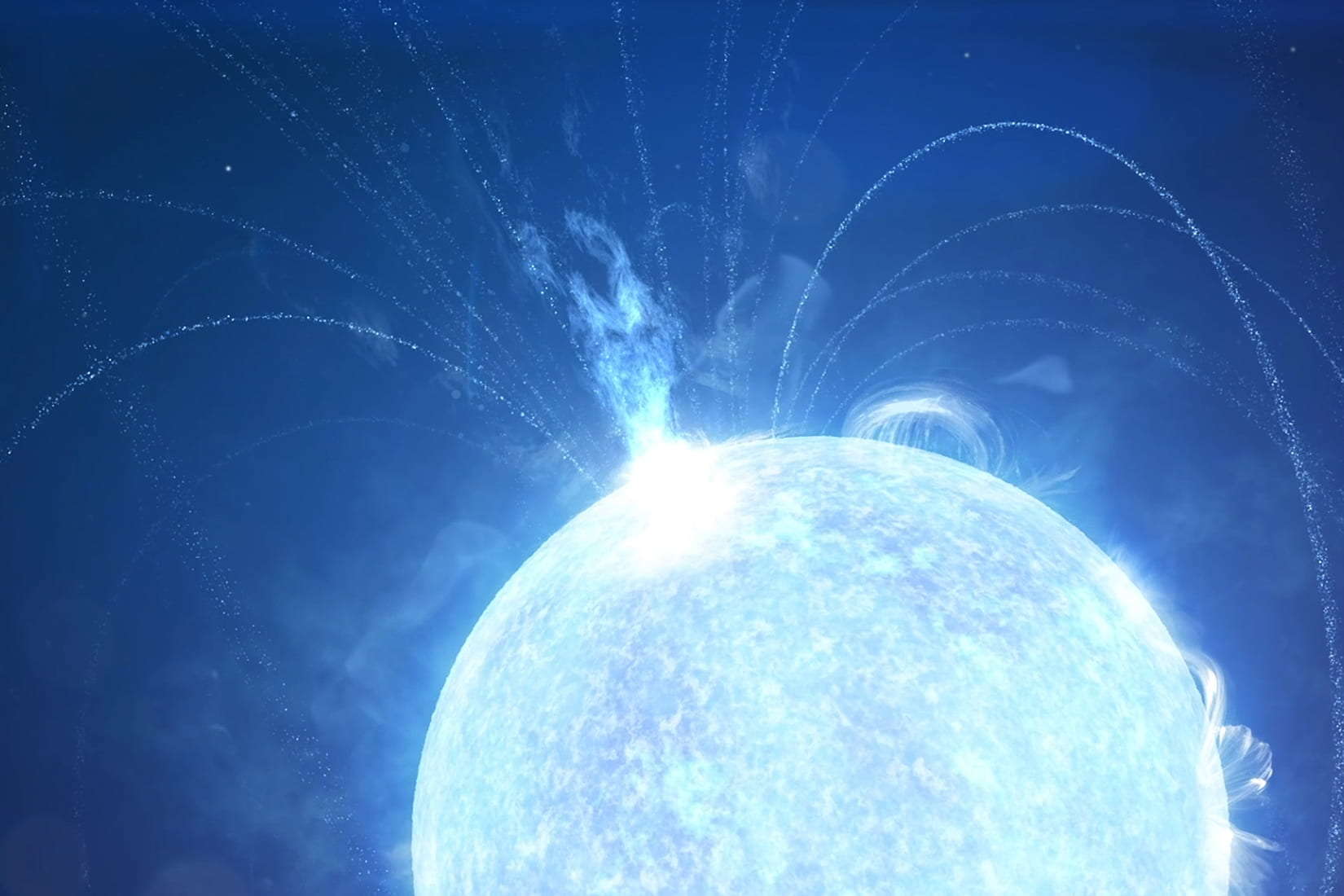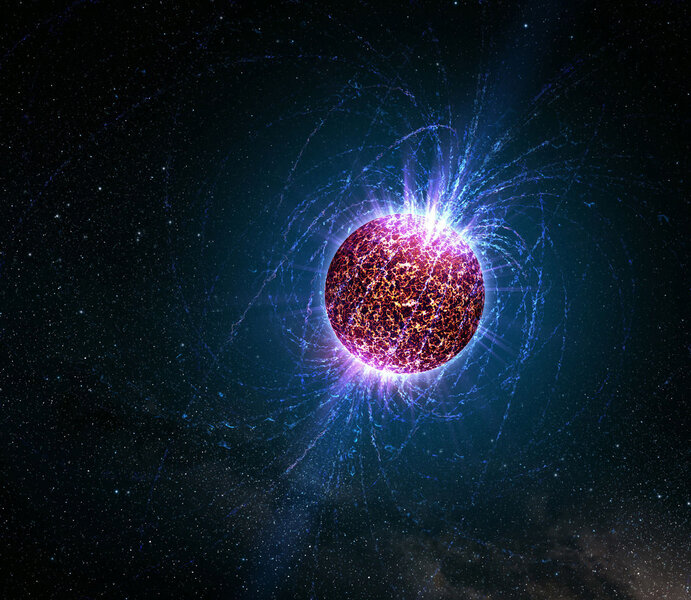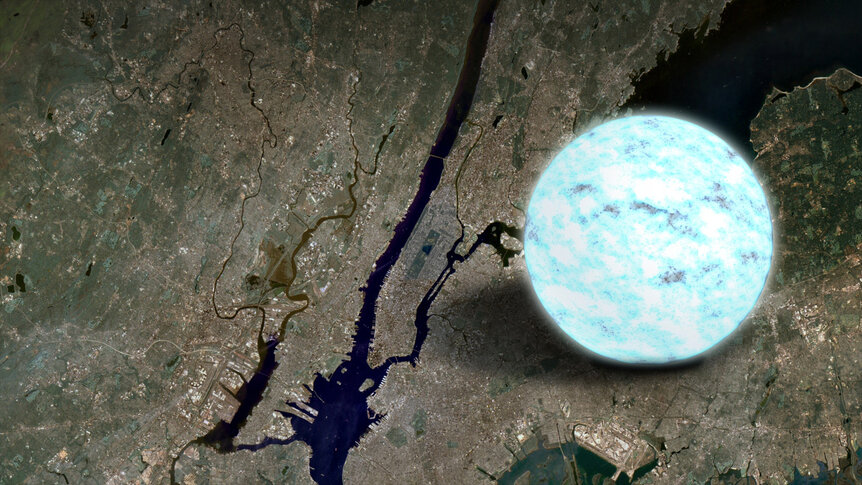Create a free profile to get unlimited access to exclusive videos, sweepstakes, and more!
A brain-curdling magnetar superflare seen in a neighboring galaxy

As someone who commonly deals in astronomical destruction, I get a lot of people asking me what scares me most about space. Asteroid impacts? Solar flares? Rogue black holes?
Nope. Not even close. The answer is magnetar superflares.
Why? Well, one was seen recently that, during the one-tenth or so of a second it erupted, emitted up to 100 trillion times the energy of the Sun.
!!!!
The event was spotted by NASA's Fermi satellite, which detects gamma rays from space. These are the highest energy form of light, and can only come from fantastically energetic and violent events: Exploding stars, black holes gobbling down matter, and the like.
The burst of gamma rays was seen on April 15, 2020, and was quickly pinpointed to be coming from NGC 253, a nearly edge-on spiral galaxy about 11 million light years away. While that's close as galaxies go it's still a long walk from Earth... yet even from that distance Fermi easily detected the radiation blasted away by the event.
An explosion like this one has only been seen three times previously; two (in 1998 and 2004) in our Milky Way and one (in 1979) in our satellite galaxy the Large Magellanic Cloud, about 160,000 light years distant.
I've written about the 2004 event before, and everything about it still gives me the heebie-jeebies. The blast of gamma rays was so strong it saturated detectors on several astronomical satellites, made the Earth's magnetic field ring like a bell, and also physically affected our atmosphere, partially ionizing the upper layer.
Mind you, SGR 1806-20, the magnetar that blew in the 2004 event, is 50,000 light years away, halfway across our galaxy. Yet it still was able to make all that trouble for us.
So, yeah. Magnetars freak me the hell out.
[Note: I know a lot of people get scared by things like this, so I'll note that as far as we know, there are no magnetars capable of producing giant flares close enough to us to do serious damage. They scare me in general, just thinking about them. I'm actually far more worried about a big solar event than I am about anything as esoteric as a magnetar blast.]
What's the engine behind all this chaos? A magnetar is a kind of neutron star, the super-dense remains of the core of a massive star after it goes supernova. While the outer parts of the star explode, the core collapses. If it's massive enough it forms a black hole, but if it's between about 1 – 3 times the mass of the Sun it gets squeezed down into a ball of mostly neutrons just a dozen or so kilometers wide. Think about that for a sec: The mass of an entire star crushed down into a sphere the size of a city. It's incredible.
But it gets more amazing. The gravity on the surface of a neutron star can be a billion times that of the Earth, but even that is dwarfed by the magnetic field, which can be — get this — a quadrillion times the Earth's strength. Not many get that kind of magnetic field, but those that do we call magnetars. The strength of their magnetism is so high that it affects everything around them to a higher degree than even the ridiculous gravity.
But when you take the two together, things get apocalyptic.
The magnetic field is embedded in the crust of the neutron star, emanating from deep inside. Sometimes, the crust can shift, similar to what happens when the Earth's crust shift during an earthquake, but instead you get a starquake. And the energy involved is absolutely soul-stomping.
Remember the gravity is a billion times Earth's, so dropping a marshmallow onto the surface of a neutron star would release as much energy as a decent-sized nuclear bomb. But also the crust of the star is incredibly dense, so the mass that shifts in the starquake is enormous, too. Even though the crust may shift by a mere centimeter, the seismic energy released is hellacious, many billions of times the Sun's output. More.
This in turn violently shakes the magnetic field, where vast amounts of energy is stored. Together, these combine to cause a cataclysmic eruption of energy: a magnetar superflare, an event that is the equivalent to the entire energy output of thousands of galaxies.
A huge blast of plasma comes screaming out from the magnetar, moving at a significant chunk of the speed of light. While the initial burst may last for a fraction of a second, the plasma continues to radiate high-energy radiation for many more seconds before expanding, cooling, and fading.
At least, that's what we think is happening. The details are a bit unclear. Part of the problem is that only a handful of these have been seen (and the ones in 1998 and 2004 were difficult to observe because they were so bright in gamma rays). Hopefully, studying this event from NGC 253 will help there.
Magnetars are extremely rare; we only know of 29 in the entire galaxy, and only a fraction are capable of such chaos (or at least if more do, the events are so rare we hardly ever see them).
I'm of two minds on this. One is that their rarity is too bad; these are fascinating events and could give us a lot of insight on the interiors of neutron stars and their magnetic fields. We know that they're a source of Fast Radio Bursts, too, which we don't understand much at all, so figuring out that connection would be very cool.
The other is relief. I'd very much prefer we don't see very many superflares! Or if we do, let them come from other galaxies, where I don't live. I think that's fair.






























